Borderland Infrastructures – an MMB special series exploring the material and symbolic infrastructure of border regimes in the port cities of Calais and Dover.
By Victoria Hattam.
Governments around the globe have been building border walls for decades: Calais is no exception. At least since the Touquet Treaty, the UK government has helped fund the securitization of the Port of Calais through a variety of construction projects. Cement walls, white-mesh-razor-wire fencing, and landscaping are being used to restrict undocumented migrants from crossing from Calais to Dover. Bordering is an expensive business: the House of Commons Research Briefing puts the UK financial commitment to France between 2014 and the 2022/23 financial year at slightly more than GBP 232 million (Gower, 2023). And even this figure, Gower notes, underestimates the total cost as supplemental payments can be found in most years. In 2018, for example, the supplemental payment for Calais bordering was an additional GBP 45.5 million in addition the initial allocation.
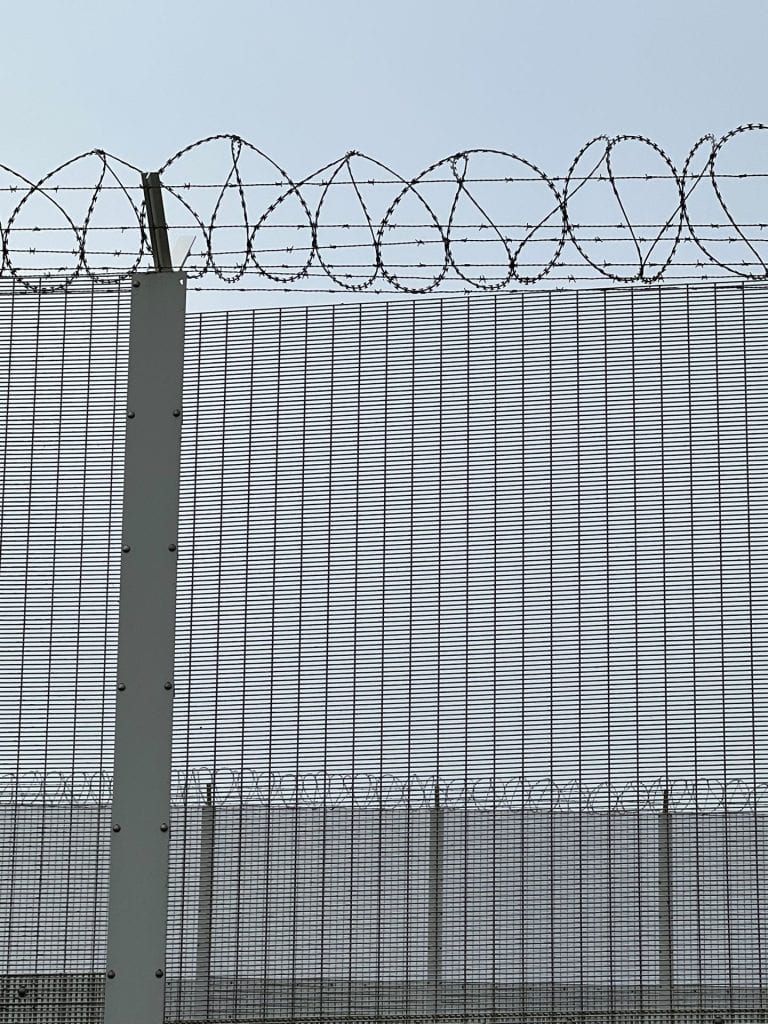
I was fortunate to be able to join an MMB trip to Calais last summer and found even my short trip revealing. I began to see the slippage from walls to landscaping. Intense as border walls, razor wire, and surveillance technologies are, it is the landscape design that has stuck with me. Long after one leaves the border proper, bordering continues.
Bouldering mobility
Hundreds of large boulders have been placed throughout Calais, packed close together, filling a variety of once open spaces. Small parks, spaces underneath bridges, and even small median strips alongside roadways and city intersections now are occupied by rocks rather than people. The materials of choice are decorative boulders: large rocks, generally 3-5 feet in diameter, irregularly shaped, placed in irregular patterns as if in a natural setting. At times, the boulders are accompanied by an array of ornamental grasses: tall, textured, different shades of pale yellow, browns and greens – a touch of Russian Sage for brighter color. The grasses sway in the breeze contrasting with the immovable boulders. It’s a look. Hardscaping, as landscape designers often refer to it, can be found throughout the city.
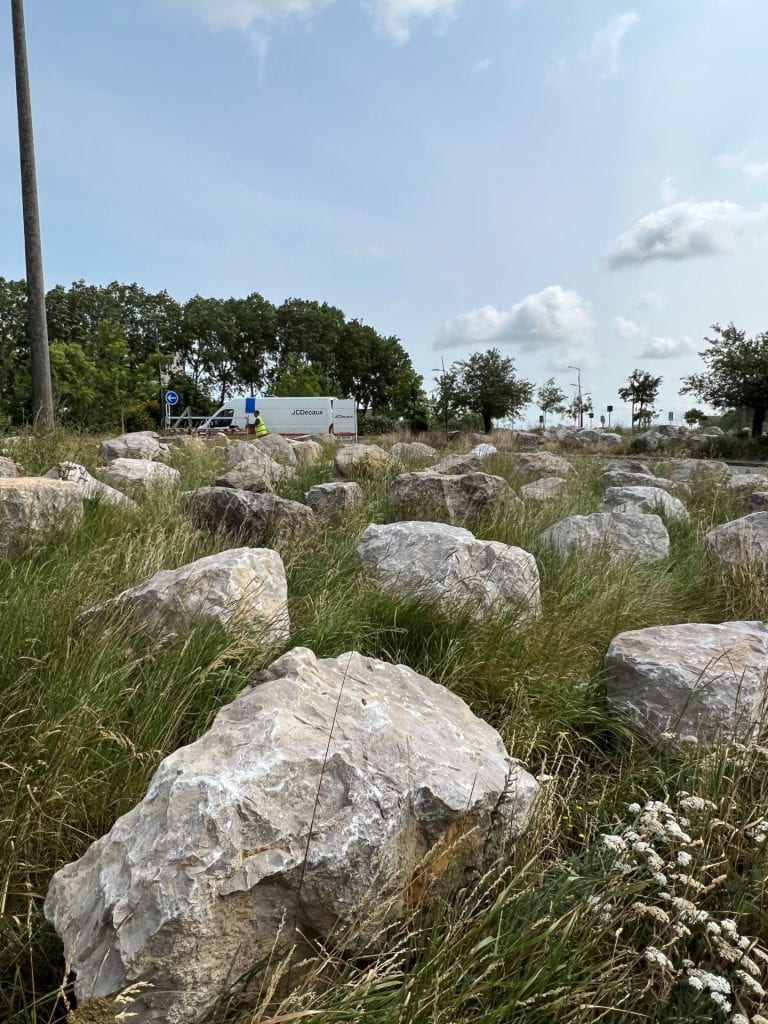
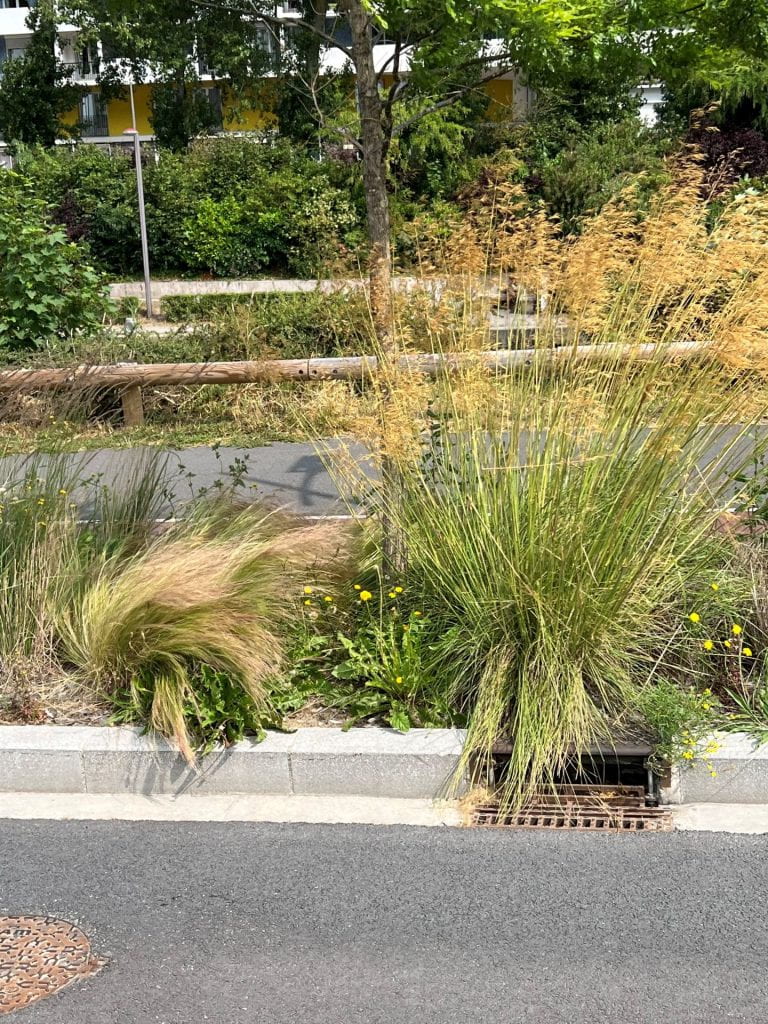
Fixation points, the French government argues, are being unfixed by making it impossible for people on the move to congregate (Pascual et al., 2023: Van Isacker, 2020). One can sit on the boulders, one might even be able to lie down between them, but they are placed tightly together making congregation and encampment difficult. The so called ‘Jungle’ of Calais is not to be repeated. Landscape design is a new frontier of border policing.
After a day of walking the city, it is difficult to distinguish public beautification projects from border policing. Ponds, parks, flowerbeds all make the city greener, but these very same elements are designed to make Calais less hospitable to the undocumented by removing vegetive cover.
Boulders and walls control movement differently. The recently constructed white-mesh-razor-wire fences are designed to stop undocumented migrants from crossing over to the UK. For walls, movement is the problem. Boulders carry with them a different politics: move along now, do not gather here. For boulder landscaping, it’s the stopping that is threatening. Walls and boulders create a double opposition in which neither moving nor staying in place are permitted. Migrants, as Nandita Sharma (2020) has argued, are those deemed out of place.
Border creep
The turn to landscaping materializes the ways in which border policing is never simply a matter of securing territorial perimeters. Border security bleeds into internal policing (Ngai, 2004). In Calais, and many other cities, a variety of bordering devices can be found within the city limits. Temporary steel fence sections sit on street corners standing at the ready, waiting to be called to action. Heavy metal poles also have been inserted into the middle of the sidewalk diverting and obstructing movement. The poles are not placed alongside footpaths but are inserted right where one might usually walk. Obstruction is everywhere.
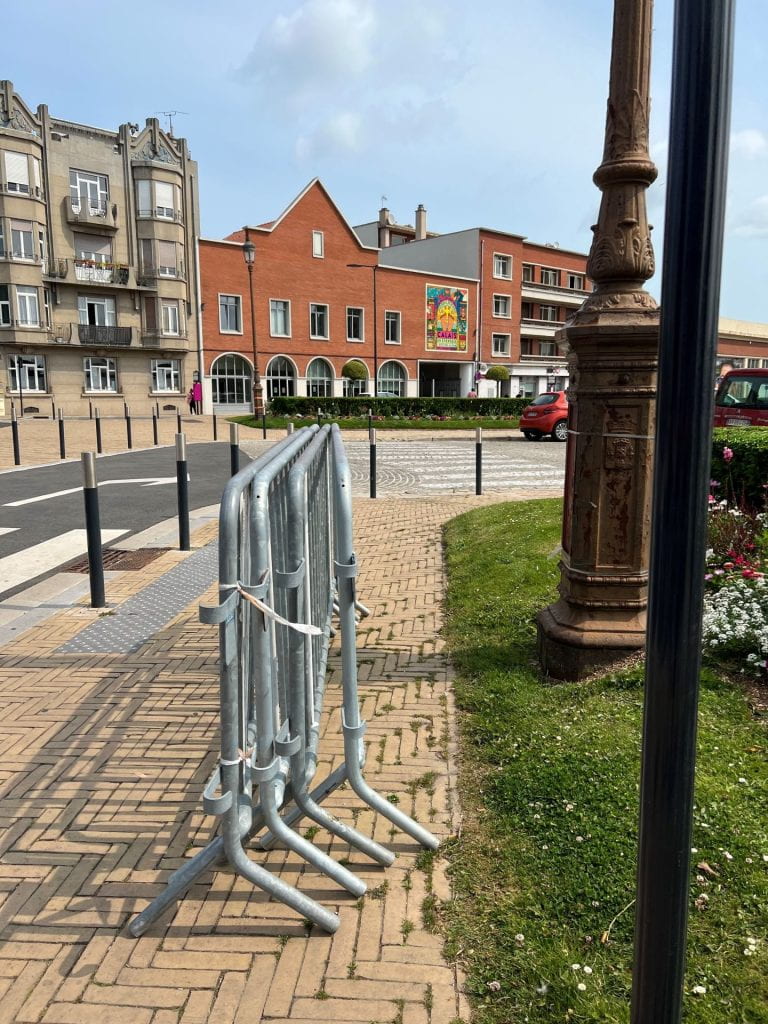
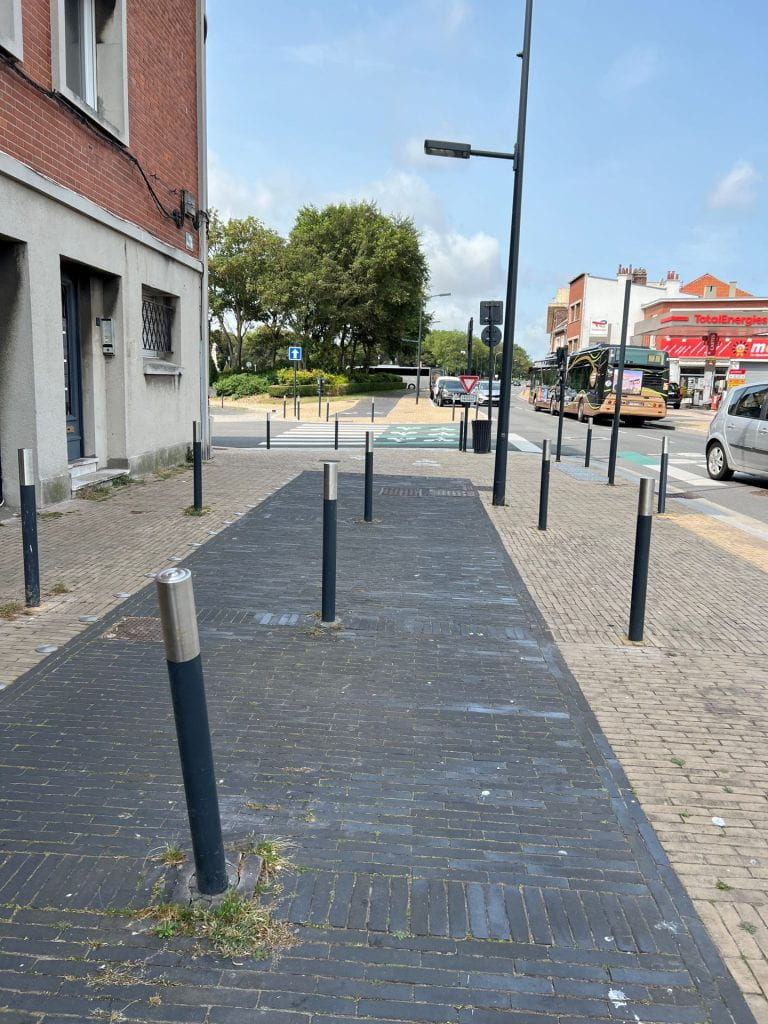
Aesthetics and politics: what politics do boulders carry?
Living and working in New York City, I am accustomed to highly securitized spaces. Sidewalks, roads, and buildings are often blocked off, supposedly protected by the deployment of anti-bombing barricades. But New York barricades have a different aesthetic. Rather than natural, irregular, softer boulders, New York City barricades present as manufactured objects: straight lines and crisp edges, often stamped with the New York Police Department initials (NYPD) making clear that this is an official barrier. There is no mistaking NY barricades for landscape features. The barricade of choice is the Jersey Barrier that is materialized both in cement and heavy-duty plastic. Few flowers and grasses are included to soften the look. Security is front and centre.
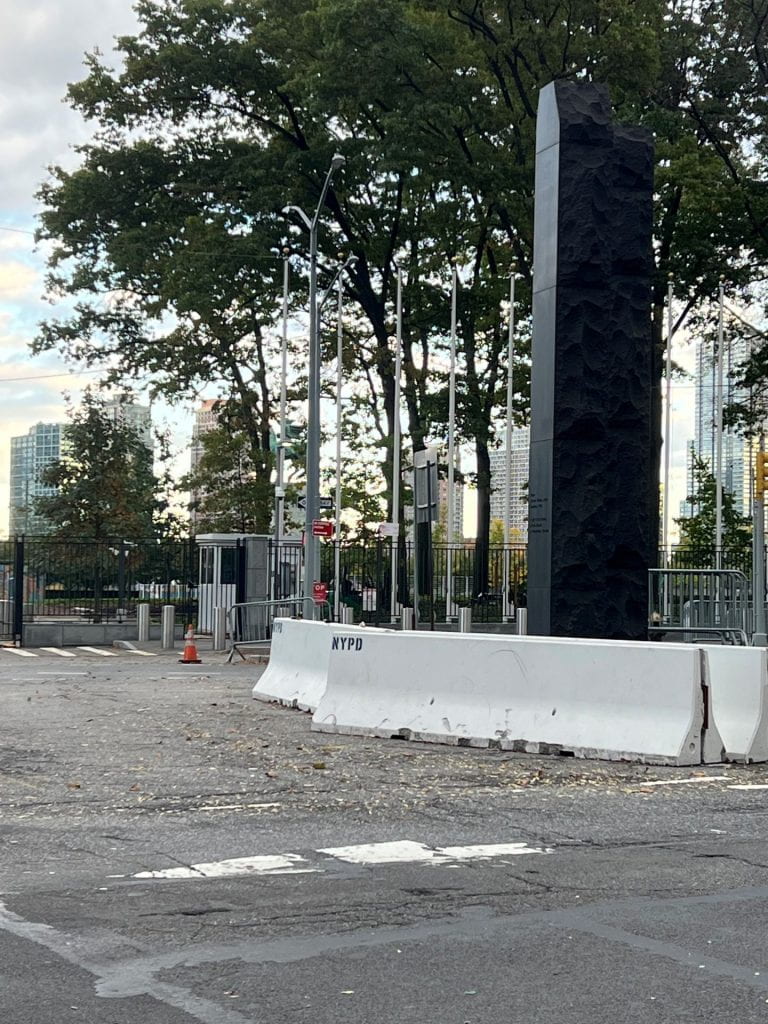
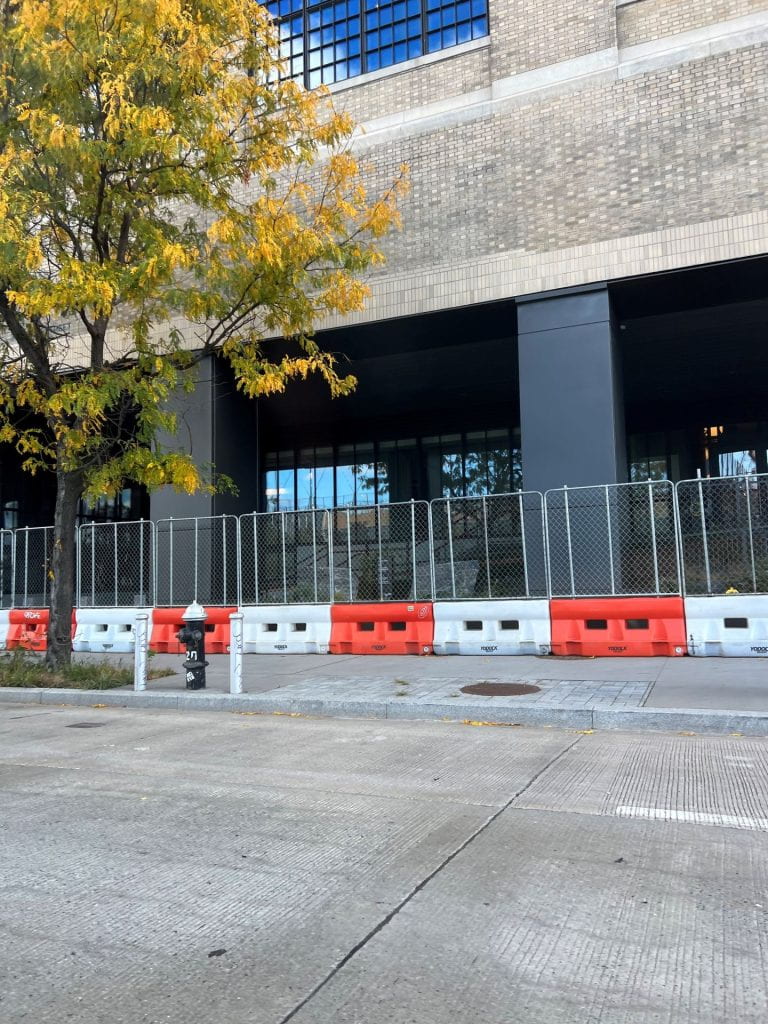
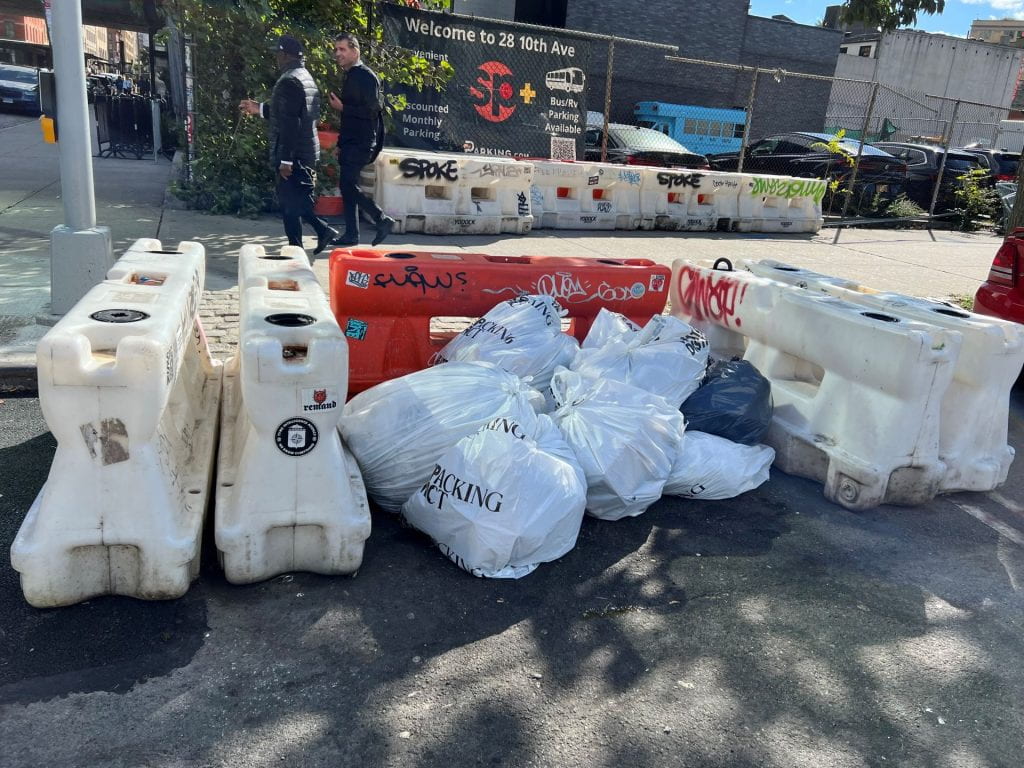
At times, there is a grunge counter aesthetic in New York in which garbage mingles alongside security barriers.
Jersey Barriers were introduced in the 1940s and 50s through Departments of Transportation as devices for minimizing incidental damage during traffic accidents. Over the last 50 years, the barriers have been used in a wide array of policy domains, including deployment by the Department of Homeland Security at the US-Mexico border and by the Department of Defense in Iraq. Traffic management devises have morphed into security objects (Copp, 2018; U.S. Department of Defense, 2006).
The shift from walls to boulders does not diminish hostility towards migrantized people. On the contrary, it extends that hostility inwards. Consider the street alongside Little Island, the newly constructed park that sits just off Manhattan on the Hudson River. Little Island aspires to be a ‘magical place’, but as one enters and exits, there is a sign in big bold letters stipulating that this is an ‘enforcement zone’. Parking and bordering merge. I can no longer easily distinguish one from the other.
Victoria Hattam is Professor of Politics at The New School for Social Research, New York. Her current research focuses on US-Mexico border politics and the global political economy. Victoria is currently a Leverhulme Visiting Professor at the University of Bristol, hosted by MMB. During 2023-24 she is giving numerous workshops, seminars and public lectures at Bristol – read more about her events here.
Other blogposts in our series on Calais include ‘Time and (im)mobility in Calais’ borderlands‘ by Juan Zhang, ‘Breaching two worlds: seeing through borders in Calais‘ by Bridget Anderson and ‘Notes from a visit to Calais‘, a video blogpost by Nariman Massoumi.

